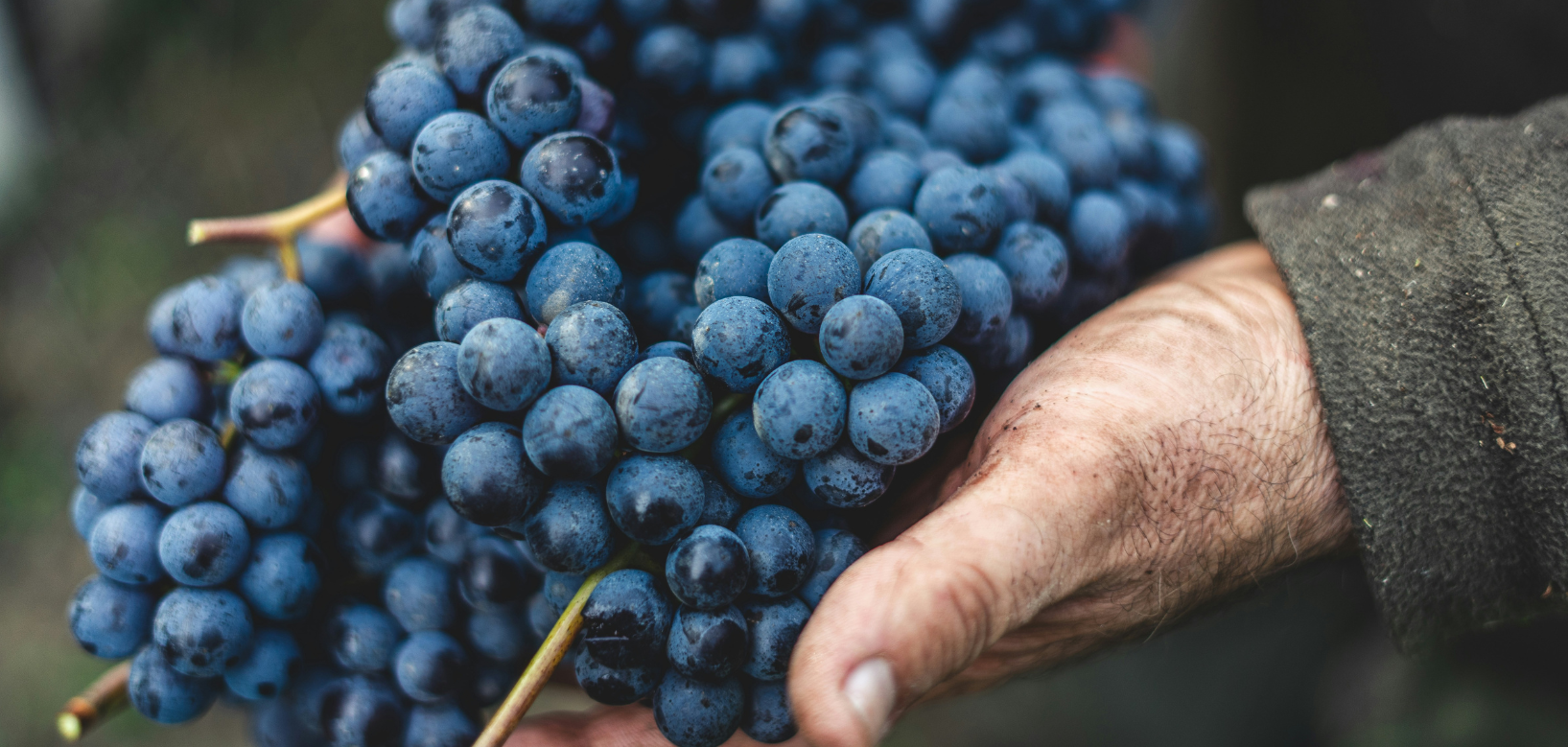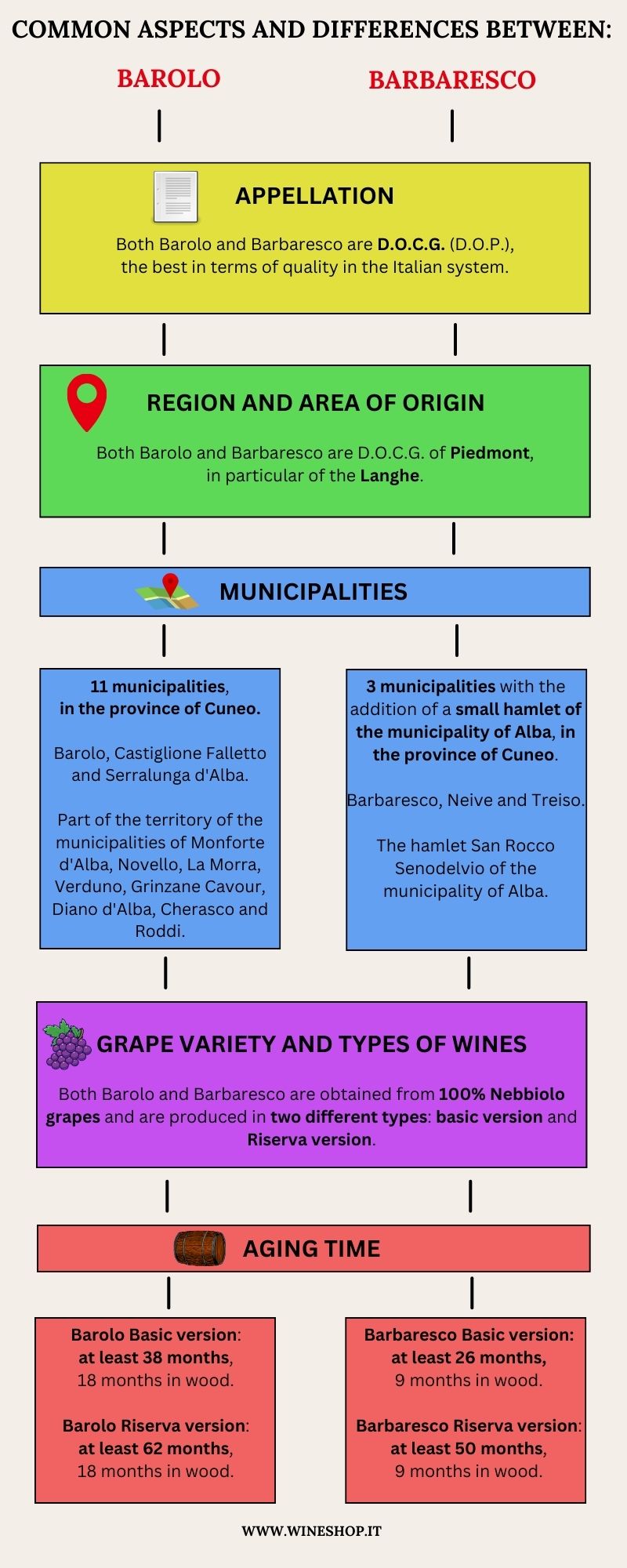Barolo and Barbaresco: what are the differences?
You are approaching the world of Italian wine and you immediately want to compare yourself with two giants: Barolo and Barbaresco. You discover that these two Piedmontese red wines share a series of productive and organoleptic traits that generate a bit of confusion.
You want to understand their differences. Our wine blog was created to resolve these issues and clarify the main doubts regarding Italian wines and Appellations.
For this reason, we decided to create an article that explains the difference between Barolo and Barbaresco. Let's compare these two giants of Italian oenology, but initially we will explain their many common traits, those that often generate confusion among neophytes, and then highlight the differences, those aspects that characterize, distinguish and make each of the two Appellations unique and inimitable.
If you want to know the differences between Barolo and Barbaresco, dedicate a few minutes of your time to us and read the following article.
Photo by Andrea Cairone on Unsplash
What do Barolo and Barbaresco have in common?
Barolo and Barbaresco have several aspects in common. This series of common characteristics can lead to a certain confusion and, in some cases, to the lack of distinction between these two wines.
We can identify 4 MAIN ASPECTS IN COMMON BETWEEN BAROLO AND BARBARESCO:
1️⃣ TYPE OF WINE APPELLATION
The first trait that Barolo and Barbaresco have in common is the type of denomination recognized for these wines.
➡️ both Barolo and Barbaresco are D.O.C.G., the best in terms of quality in the Italian system.
The two D.O.C.G.s, Barolo D.O.C.G. and Barbaresco D.O.C.G., were recognized in the same year, 1980. Previously both were D.O.C., since 1966. In short, the path that led to their official recognition is the same.
2️⃣ REGION OF ORIGIN
The second trait that Barolo and Barbaresco have in common is the region and wine-growing area of origin.
➡️ both Barolo and Barbaresco are D.O.C.G. of Piedmont, in particular of the Langhe.
The Langhe is a famous wine-growing area in lower Piedmont, located between the provinces of Cuneo and Asti, consisting of an extensive hilly system with land and a microclimate ideal for growing vines. It is one of the most important and well-known wine-growing sub-regions at a national and international level.
3️⃣ GRAPE VARIETY and TYPES OF WINES
The main common trait between Barolo and Barbaresco is the grape variety from which their wines are made.
➡️ both Barolo and Barbaresco are obtained from 100% Nebbiolo grapes, the most important black grape variety in Piedmont.
Furthermore,
➡️ both Barolo and Barbaresco can be produced in two different types: basic version and Riserva version.
Sharing the region of origin and, above all, the grape variety and types of wines that can be produced, it is clear that, for the less experienced, it may happen that Barolo and Barberesco are confused.
To avoid this inconvenience, continue reading this article because now we will see what difference there is between Barolo and Barbaresco, that is, what aspects clearly distinguish the two appellations and the two wines.
What are the differences between Barolo and Barbaresco?
We have identified 2 MAIN MACRO-DIFFERENCES BETWEEN BAROLO AND BARBARESCO which then influence the specific organoleptic qualities of the two wines.
1️⃣ MUNICIPALITIES
As we wrote in the previous paragraph, Barolo and Barbaresco come from the same region, Piedmont, and from the same wine-growing landscape, that of the Langhe, but the municipalities in which it is possible to produce the two wines are different.
➡️ Barolo and Barbaresco are produced in different municipalities in the Langhe.
According to the production rules of Barolo, the municipalities in which it is possible to produce this wine are 11, all in the province of Cuneo: the entire territory of the municipalities of Barolo, Castiglione Falletto, Serralunga d'Alba and part of the territory of the municipalities of Monforte d'Alba, Novello, La Morra, Verduno, Grinzane Cavour, Diano d' Alba, Cherasco and Roddi, in the province of Cuneo.
According to the production rules of Barbaresco, the municipalities in which it is possible to produce this wine are 3, with the addition of a small hamlet of the municipality of Alba: the entire territory of the municipalities of Barbaresco, Neive, Treiso and the hamlet of San Rocco Senodelvio, aggregated to the municipality of Alba, in the province of Cuneo.
This is a fundamental difference because Nebbiolo is a particular vine, very receptive and capable, like few others, of bringing the characteristics of the land where the grape is grown into the bottle. This means that the Nebbiolo grown in the different municipalities produces wines with different organoleptic qualities.
The Barolo area has a specific geological conformation, with mineral layers of limestone and tuff which give the wine structure, longevity, richness and great harmony. In the Barbaresco area the soils are characterized by marl and sand. These soils generate wines that are always full, velvety, soft, pleasantly and elegantly tannic.
2️⃣ WINEMAKING RULES
Another fundamental difference concerns the winemaking rules relating to the aging of the two wines.
➡️ Barolo and Barbaresco are subjected to different aging periods.
Barolo, in the basic version, must be aged for at least 38 months (18 months in wood). The basic version of Barbaresco must age for at least 26 months (9 months in wood).
The Barolo Riserva ages at least 62 months (18 months in wood), while the Barbaresco Riserva ages at least 50 months (9 months in wood).
These are the main differences between Barolo and Barbaresco.
If you liked our article and if you want to continue to receive news, updates and curiosities about the world of wine, subscribe to the Wineshop.it wine newsletter. Lots of content and offers await you!










